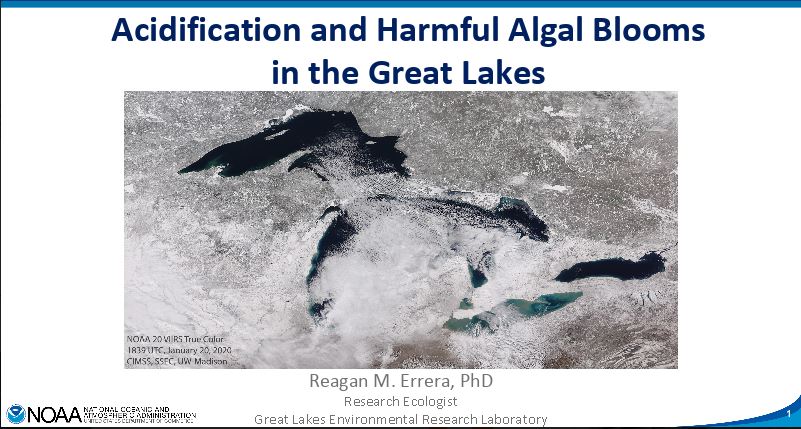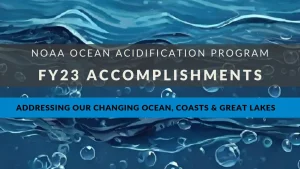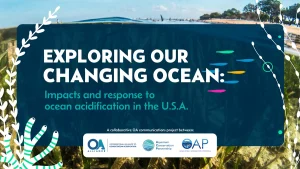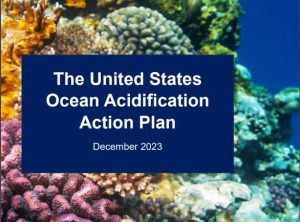The Great Lakes are the largest freshwater system on Earth, holding 20 percent of the world’s surface freshwater. Ecosystem services provided by the Great Lakes are vulnerable to a variety of stressors, including harmful algal blooms, eutrophication and oligotrophication, invasive species, contaminants, and changing climate. Acidification within the Great Lakes, as with oceanic systems, is projected to decline in response to increasing atmospheric pCO2. Ongoing acidification will increase the availability of inorganic carbon within the aquatic system and could reduce stress and energy cost of carbon uptake for certain phytoplankton species, potentially shifting the availability of carbon to favor of one type of algae over the other. In addition, the region is experiencing a rise in aquatic temperatures leading to changes in lake stability. Thus, the concomitant impact of both temperature and pCO2 availability may additionally stress the Great Lake's system, potentially driving changes in community dynamics. In the Great Lakes ecosystem, cyanobacterial HABs (cHABs) have been a recurrent feature since mid-1990s and elevated pCO2 can contribute to the dominance of cyanobacteria within freshwater phytoplankton assemblages. The predominant cHAB is Microcystis aeruginosa, which produces expansive blooms in western Lake Erie and Lake Huron (Saginaw Bay). However, the Great Lakes are impacted by a suite of additional species, including Cylindrospermopsis, Planktothrix, and Cladophora. Due to the multi-faceted nature of the carbonate system, impacts or potential shifts to phytoplankton species composition and abundance are unknown, however, individual phytoplankton assemblages will likely have unique responses. Currently, little research has been conducted on inorganic carbon availability, acidification, and their role in phytoplankton dynamics within the Great Lakes ecosystem. I present a general overview of the current state of knowledge and provide an update on current acidification research activities at NOAA’s Great Lakes Environmental Research Laboratory.
View the recording and complete this questionnaire after viewing.
View the recording and complete this questionnaire after viewing.






